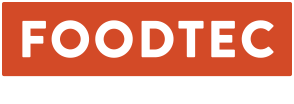When it comes to the restaurant industry, labor, or the lack thereof, has been a key issue since the beginning of the pandemic. While the industry has always had high turnover rates, the pandemic has exacerbated that fact. The most recent report from Bureau of Labor Statistics revealed that in the past year alone quit rates for the foodservice industry has grown from 4.8% to 6.9% – a larger jump than any other sector listed. In addition, over the past few months, restaurant job growth has largely remained stagnant.
As restaurants head into the third year of the COVID-19 pandemic with ongoing worker supply problems, we look at ways’ operators can boost retention and keep the employees they already have. (or – ways’ operators can attract, retain and motivate staff).
1. Offer Competitive Pay & Benefits
All businesses from SMEs to big name brands offer employee benefits in a bid to attract more talent and establish rapport with employees. The traditional or standard benefits that all of us have come to expect include health and dental coverage, life insurance, and retirement plans. But with 2 in 3 workers saying that they would switch or quit their job for higher wages and more benefits employers need to be more creative with the types of benefits they can offer in order to stand out in such a competitive market.
Boston-based Boloco, a fast-casual burrito chain credit their tailored benefits programs to their high retention rates. One such benefit Boloco offers is a transportation benefits program for all employees – a benefit that was developed through quarterly retreats with employees to find out what was important to them. It also funds public transportation passes and gas cards for both full- and part-time employees.
Across industries, transportation stipends have become valued by many employees, as it allows them to offset expenses associated with get to and from their place of work. Now with the advent of Covid, the demand for paid time off, child care coverage and in particular, flexible work schedules have increased significantly.
In an effort to create the right benefits program, it is critical to learn what is important to employees, understand their various economic constraints – in doing so will go a long way to attracting and keep talented team members from looking elsewhere.
2. Reward Employees
While benefits are expected, recognizing and rewarding an employee plays an important part in employee engagement and retention. An individual who knows that they are an integral part of a company’s functioning, and not “disposable,” will feel more secure.
If a staff member chose to pick up an extra shift to cover a busy time of day, pitched in by bussing some tables or a customer tells you how great their server was – whatever the reason a team member goes above and beyond, celebrate it! The reward system to acknowledge performance can be as simple as an extra hour of lunch, a gift certificate, or even recognition during a staff meeting. By creating a culture where individual contributions matter and are celebrated, you’ll retain more employees.
Similarly, in an industry notorious for high turnover rates, longevity should be duly rewarded. By recognizing the length of time that an employee has worked for your organization and observing specific work anniversaries (5, 10, 15, 20+ years of service) is not
just a way to reward employee tenure but the right program can have major impacts on organizational success.
Research has shown that employees stay at organizations for 2-4 years longer when their company has an effective years of service program. Such awards make employees feel appreciated for their work and provides a sense of belonging all of which results in a more satisfied and higher performing employee. As an upshot, it also inspires peers to work better.
3. Provide Career Development & Growth
Companies with a high retention rate provide opportunities for their employees to expand and grow, both in the company and in their professional life. Invest in your employees – offer mentorship programs, supervision for professional certificates, cross-training, educational opportunities. It can be anything from safe serving training for bartenders, sanitation and food handling training for kitchen staff, drivers’ safety training for delivery drivers, to a specific growth plan to help them receive raises and promotions. Whatever it may be, offering opportunities for continuing education are a great way to keep your employees engaged and loyal.
There is no denying that the restaurant industry labor shortage will continue to be a challenge for the foreseeable future. There is no quick fix. In addition, there is also no disputing the fact that when it comes to employee benefit plans, budgets are also at an all-time low.
However, by engaging with your employees and acknowledging them, whether its understanding what is important to them or rewarding their work, you will increase their job satisfaction and your retention rates. The more you invest into your benefits, the more you will get back from your people.




